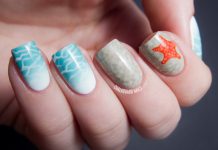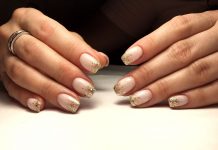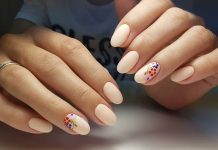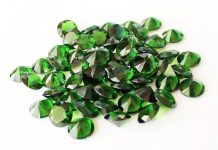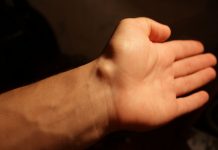Content:
- How to narrow down jeans down
- How to knit jeans without a sewing machine
- How to narrow the pants in the waist
- How to make jeans along the entire length
Fashion is very capricious and changeable. And if last spring you were looking for flared jeans, today narrowed models are at the peak of popularity. But do not immediately throw away old pants and run for new clothes. If desired, they can be narrowed down at home, which will not only save your budget, but also give jeans a second wind.
How to narrow down jeans down
Having decided to make old jeans already, you should be patient and prepare the necessary tools. This will require:
- sewing machine;
- pins;
- needles and thread of a suitable color;
- overlock;
- scissors;
- ruler;
- iron;
- chalk or a piece of old soap.
The easiest way
Since the finishing lines run along the outer edge of the trousers, they should be taken along the inner seam. The procedure is as follows:
- To start the bottom should be cut.
- Get rid of wrinkles fabric. To do this, the pants are ironed.Ideal if the iron has a steam function.
- Jeans are turned inside out.
- Wearing jeans on yourself, you need to note the places that are suturing. To do this, the pants are held together with a pin at the point where the future seam passes.
- It is important to check whether this width will suit you, and whether there will be any inconvenience while driving. To do this, walk, sit down and if everything is in order, then you can get to work.
- The product should be spread out on a flat surface, straightening all the resulting irregularities.
- Using chalk or a piece of soap, mark the lines on the fabric that are currently chipped with a pin.
- Sweep the resulting line. For this, a “needle forward” or “obmetochny” seam is suitable.
- Put the jeans on yourself again and, if necessary, eliminate all defects and inaccuracies.
- After removing the pants, draw new lines with chalk, not forgetting to leave an allowance of 1-1.5 cm.
- All excess fabric is trimmed.
- Using threads to match the fabric, sweep the allowances on the front halves on the overlock.
- The resulting seams on the rear halves ironed. To make it easier to do, you can use a pad or a special pad, which is available on the ironing boards.
- With a smooth seam, the product is sewn along pre-made lines.
- Lower cuts are aligned and allowances of about 3 cm are noted.
- Having adjusted the bottom, you should sew on the front side with a stitch of 0.4 cm.
- Having processed a bottom of trousers, they need to be ironed by the iron. For this it is convenient to use a pad or pillow.
- It remains to remove the extra thread, twist and try on jeans. If you are satisfied with the result, iron and wear new fashionable pants.

To finish the line was dense and looked expressive, in the upper thread displays 2 coils of the same shade. In the shuttle should be 1 thread to match the fabric.
Method using old trousers
This method is almost identical to the previous one, except that over wide trousers, you should impose those that are perfectly seated on you. The marking of all new seams is made on the basis of a narrow model. All that remains to be done is to sweep the lines and try on jeans. If they sat on you the way you wanted it, you can cut off the excess fabric and sew the pants.
Method using patterns
This option can be called the most difficult. Indeed, in this case it is necessary to unpick not only the jeans to be reworked, but also narrow ones that will be used as a pattern. Despite the complexity of the process, this result will be of the highest quality.
The whole point is that the pattern should be completely transferred to the fabric of the pants to be reworked. Using chalk or soap, the fabric is laid out patterns and seam allowances. All the excess is cut off, and the pattern itself is ground off.
How to knit jeans without a sewing machine
Not every girl has a sewing machine at home and not everyone knows how to handle it. And any of them would like to look beautiful and stylish. In such cases, you can resort to wrapping extra fabric. The whole procedure takes no more than 5 minutes. The action algorithm is as follows:
- Wearing jeans, one hand to pull the trouser to the desired width.
- Holding the fabric, wrap all the excess in one side.
- It is possible to fix fabrics having turned the bottom of trousers. Depending on the length of the product is one or two approaches.
- Stand in front of the mirror and appreciate your work. If you like it, do the same procedure with another leg.
- Adjusting the result can be experimenting with the height of your pants.
How to narrow the pants in the waist
Sometimes girls are faced with a problem when the model they like is fairly loose at the waist. In this case, they can fix the problem as follows:
- The product is turned inside out.
- From the middle back seam is indented by 6-7 cm in each direction. Here you should unzip the belt.
- The step seam is unstitched by 8 cm.
- In addition, the middle seam is torn off.
- On the seamy side, chalk or soap marks the line along which the jeans will be sutured. Such places should be cleaved with a pin.
- With the help of a sewing machine is a line on the lines marked in advance.If required, the seam can be duplicated.
- All excess trimmed and sewn belt.
How to make jeans along the entire length
Over time, it can be noted that jeans have become wider and no longer look so attractive on a figure. You can knock them along the whole length in this way:
- Jeans turn inside out and wear, with the help of pins to mark the places that are planned to be removed.
- All narrowing lines are drawn with chalk or a piece of soap.
- Side seams and a belt above them are ripped up.
- Sweep fabric along pre-marked lines.
- During the next fitting estimate the result. If this is exactly what you wanted, then you can start sewing.
- With the help of a sewing machine, all overlapping seams are stitched.
- To reduce the waist line, all excess fabric is cut, and the belt is sewn into place.



